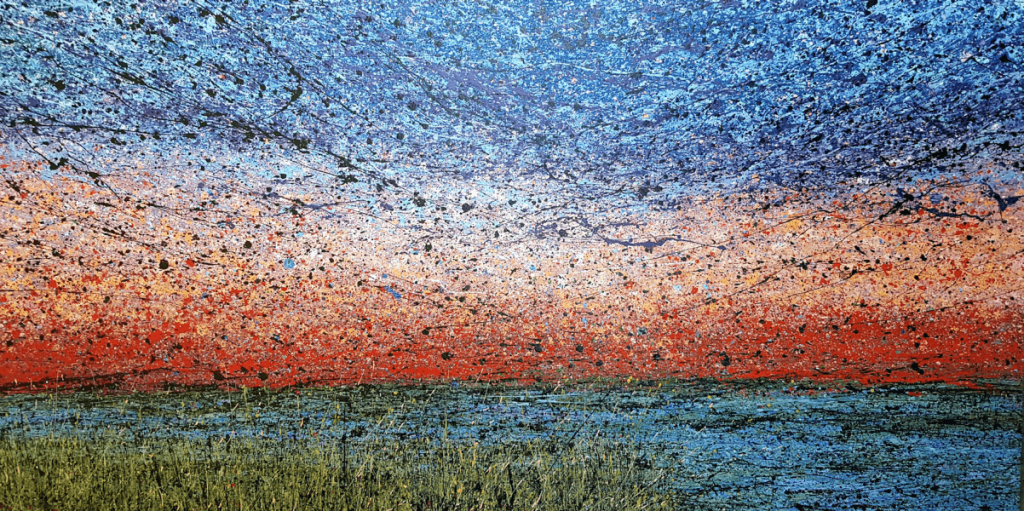
While on bed rest during a particularly nasty cold, Diana Carey, 64, had the idea to unhinge the doors of her bedroom and use them as a canvas for splatter painting. Since then, she’s moved on to painting actual canvases with the same technique. Here, Carey discusses her inspirations (yes, including Jackson Pollock), how she chooses a landscape to paint, and why a sense of feeling is necessary for any good piece of art.
“This series of paintings of skies started when I drove through Colorado last year. I was blown away by the sky—there was so much of it. I hadn’t really paid a lot of attention to the sky in many of my paintings. The sky has always been an automatic rhythm, but I wasn’t necessarily painting a particular skyscape. I was entranced by Colorado and the big cloud formations. We went through a couple of storms—the kind you don’t experience in California, especially where I am, because there are a lot of hills. From that point on, my attention has been more on sky than on landscape. My focus is not on portraits—I’m not trying to capture a tree or the ocean or a landscape; I’m trying to capture the essence of that area. I try to get the feeling of that place. It’s an impression.
Cheyenne Bottoms, Kansas is one of the few places I’ve painted that I haven’t been. A former teacher of mine posted a picture on Facebook of Cheyenne Bottoms, where she grew up. This particular photo fascinated me. Artistically, there was reflected light on the water, the juxtaposition of warm and cool colors from the sunset. I wanted to capture some of that, but it wasn’t about the formal details. The photograph had done what I wanted to do with my paintings: it had captured a feeling. An immediate sense of peace permeated the photograph. There was seclusion but also the vastness of sky. It was powerful and subdued, because it was such a quiet picture. It felt infinite and intimate at the same time. That’s what I’m trying for in my painting. I wrote to my teacher, and said, ‘This is what I was trying to portray in my work.’ She responded, ‘Yes, that’s what I felt when I was in Cheyenne Bottoms.’ Art can transport us to those places, whether it’s a photograph or a painting, and that’s what I’m trying to paint: not the space itself but the emotion of the space.
Because I’m throwing paint, I like to look and see what I’m trying to portray as I go along. What we have in our heads and what it looks like are quite different. The act of throwing paint really exemplifies this. My paint—if you take it apart piece by piece—is splatters and lines. The eye of the person viewing it corrects the splatter paint to what they want to see and feel. I came to this technique, because one day, I realized that there had to be more to Jackson Pollock than what I was experiencing. I just wasn’t getting it. I started throwing paint at the doors and trying to get a sense of where he was going with his work. I can’t say I got any closer, but I was hooked. I loved it. It’s something the subconscious does—the painting and maybe the way the world is read. I don’t view the world the same way anymore—it looks like light and shadows and dots and pieces now.
What really gets me—and it probably has something to do with how I paint and what I want to portray—is when my art impacts someone else. I had a man come up to me after a show last year, and he couldn’t say anything. He went to shake my hand and no words came out. He got it, you know? It touched the soul.”

